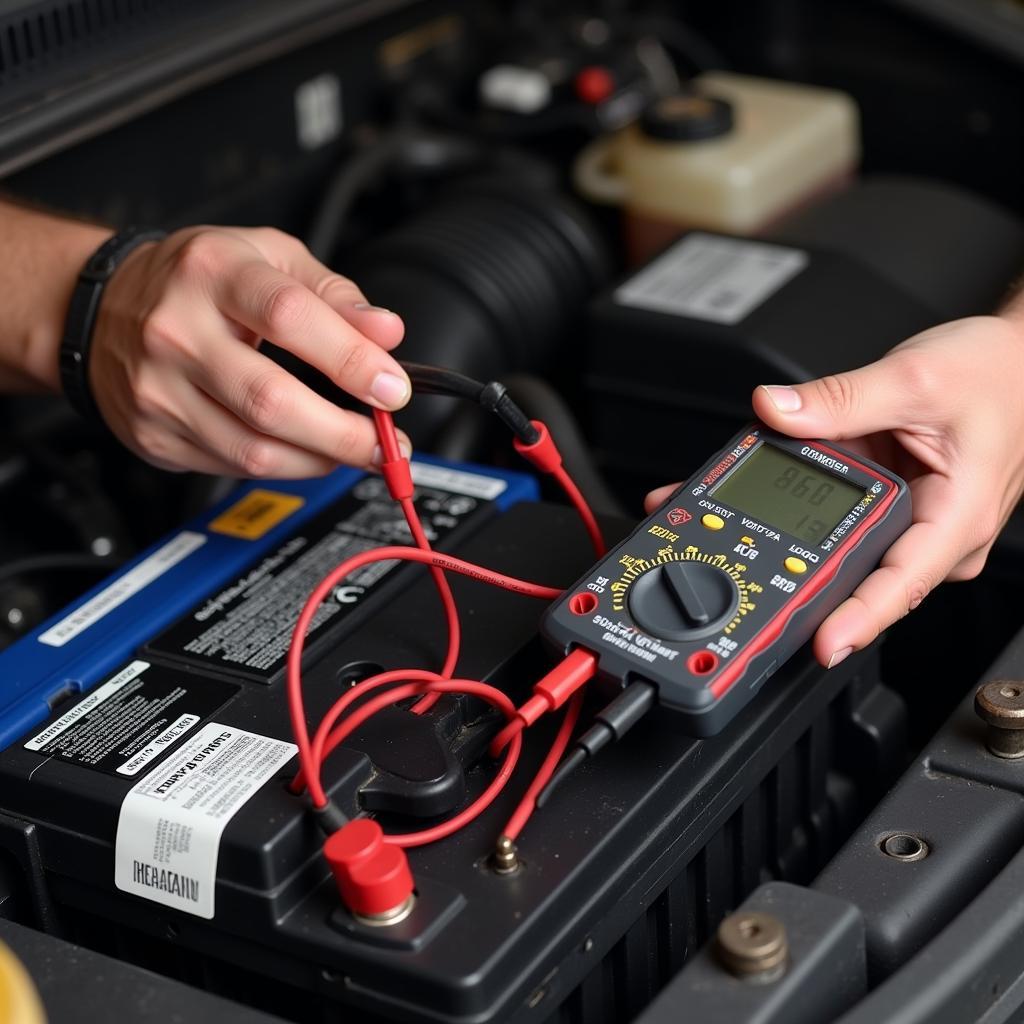If you’ve recently replaced your car battery and the check engine light is on, you’re not alone. This is a surprisingly common issue, and while it can be concerning, it’s not always a sign of a serious problem. This article will delve into the reasons why your check engine light might be illuminated after a battery replacement, how to diagnose the problem, and potential solutions.
Many drivers assume the worst when they see that dreaded check engine light. It can conjure up images of expensive repairs and stranded vehicles. However, in many cases, especially after a battery change, the issue can be relatively minor. new battery in car keeps dying A loose connection, a tripped sensor, or even a simple computer glitch can trigger the warning light.
Understanding the Check Engine Light
The check engine light is part of your car’s onboard diagnostic (OBD) system. It’s designed to alert you to potential issues within the engine and emission systems. While a glowing check engine light can indicate anything from a loose gas cap to a more serious engine problem, after a battery replacement, it often stems from a temporary disruption in the vehicle’s electrical system.
Common Causes of a Check Engine Light After Battery Replacement
-
Lost Computer Memory: When the battery is disconnected, the car’s computer loses its stored data, including learned driving habits and emissions data. This can sometimes trigger the check engine light. The computer usually relearns this information after a few driving cycles.
-
Loose Battery Terminals: If the battery terminals aren’t securely fastened, they can cause a voltage fluctuation that triggers the check engine light. Always double-check the connections to ensure they are tight and free of corrosion.
-
Tripped Sensors: Disconnecting the battery can sometimes momentarily disrupt the operation of various sensors, such as the oxygen sensor or mass airflow sensor. These sensors play a vital role in engine performance and emissions, and a malfunction can illuminate the check engine light.
-
Low System Voltage: Even with a new battery, a faulty alternator or a parasitic drain can cause low system voltage, which can lead to various electrical issues, including a triggered check engine light. signs of a bad car battery vs starter This is a more serious issue that requires immediate attention.
Diagnosing the Problem
The first step in diagnosing a check engine light after replacing your battery is to retrieve the diagnostic trouble codes (DTCs). You can do this with an OBD-II scanner, which you can purchase at most auto parts stores. The scanner will provide you with a specific code that corresponds to the issue the car’s computer has detected. what could cause the brake warning light to come on Understanding these codes is crucial to pinpoint the problem.
How to Use an OBD-II Scanner
- Locate the OBD-II port, usually under the dashboard on the driver’s side.
- Plug the scanner into the port.
- Turn the ignition on, but do not start the engine.
- Follow the scanner’s instructions to retrieve the codes.
- Write down the codes and their definitions.
Fixing the Issue
Once you have the codes, you can begin troubleshooting the problem. If the code relates to a lost computer memory or a tripped sensor, the light might go off on its own after a few driving cycles (typically 50-100 miles). check engine light dead battery However, if the light persists or you have codes related to a loose connection or low voltage, further action is required.
 Mechanic Testing a Car Battery with a Multimeter
Mechanic Testing a Car Battery with a Multimeter
“A common mistake people make is assuming the new battery is the problem,” says automotive expert, David Miller, ASE Certified Master Technician. “Often, the check engine light after a battery replacement is related to something else entirely.”
Conclusion
Experiencing a check engine light after replacing your car battery can be frustrating, but it’s usually not a major issue. By understanding the potential causes, using an OBD-II scanner to diagnose the problem, and following the appropriate steps to address it, you can quickly get your car back on the road. car battery dead overnight If you’re unsure about anything, consult a qualified mechanic for assistance. Remember, addressing the issue promptly can prevent further problems down the line and ensure the longevity of your vehicle. If the replaced battery check engine light is on, don’t panic – diagnose and fix it!
“Ignoring a check engine light, even after a battery replacement, could lead to more serious and costly problems down the road,” advises Sarah Johnson, lead engineer at Automotive Diagnostics Inc. It’s always best to address the issue proactively.
FAQ:
- Why is my check engine light on after I replaced the battery? Several reasons, including lost computer memory, loose connections, tripped sensors, or low system voltage.
- How do I diagnose the check engine light after a battery change? Use an OBD-II scanner to retrieve diagnostic trouble codes.
- Will the check engine light go off on its own? Sometimes, especially if it’s related to lost computer memory, after a few driving cycles.
- What if the light stays on? Check the battery connections, test the alternator, and address any trouble codes revealed by the OBD-II scanner.
- Should I take my car to a mechanic? If you’re unsure about anything or the problem persists, it’s always best to consult a qualified mechanic.
- Is it safe to drive with the check engine light on? It depends on the underlying issue. If the light is flashing, it indicates a serious problem, and you should stop driving immediately.
- How much does it cost to fix a check engine light issue after a battery replacement? The cost varies depending on the cause, but it can range from a simple fix like tightening a connection to more complex repairs.


